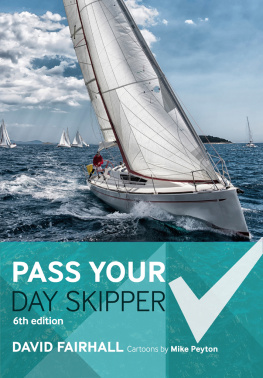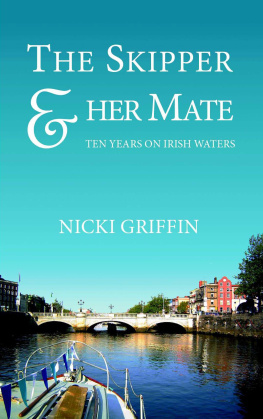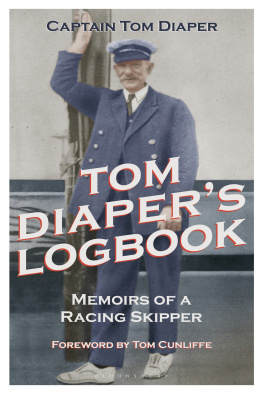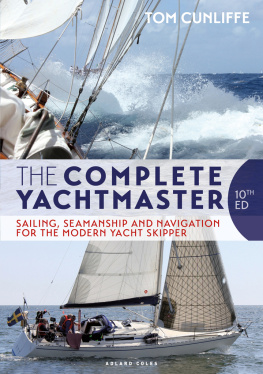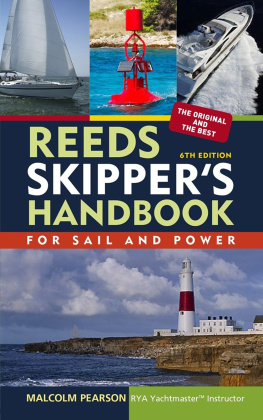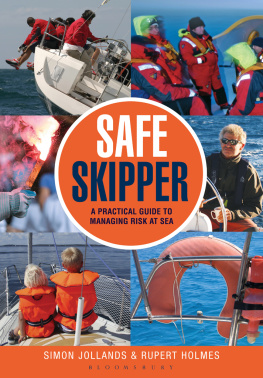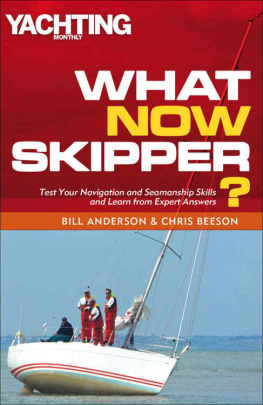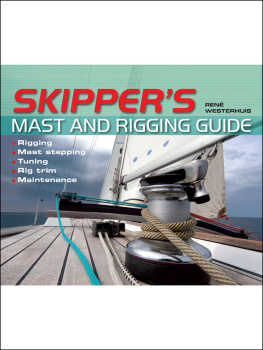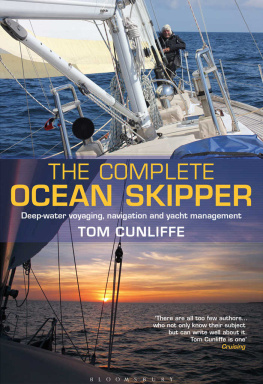
Adlard Coles Nautical
An imprint of Bloomsbury Publishing Plc
50 Bedford Square | 1385 Broadway |
London | New York |
WC1B 3DP | NY 10018 |
UK | USA |
www.bloomsbury.com
www.adlardcoles.com
This electronic edition published in 2016 by Bloomsbury Publishing Plc
ADLARD COLES, ADLARD COLES NAUTICAL and the Buoy logo are trademarks of Bloomsbury Publishing Plc
First published 2003
Second edition 2005
Third edition 2008
Fourth edition 2011
Fifth edition 2013
This sixth edition published 2017
Text David Fairhall 2003, 2005, 2008, 2011, 2013, 2017
Cartoons Mike Peyton 2003, 2005, 2008, 2011, 2013, 2017
David Fairhall has asserted his right under the Copyright, Designs and Patents Act, 1988, to be identified as Author of this work.
All rights reserved
You may not copy, distribute, transmit, reproduce or otherwise make available this publication (or any part of it) in any form, or by any means (including without limitation electronic, digital, optical, mechanical, photocopying, printing, recording or otherwise), without the prior written permission of the publisher. Any person who does any unauthorised act in relation to this publication may be liable to criminal prosecution and civil claims for damages.
No responsibility for loss caused to any individual or organization acting on or refraining from action as a result of the material in this publication can be accepted by Bloomsbury or the author.
British Library Cataloguing-in-Publication Data A catalogue record for this book is available from the British Library.
Library of Congress Cataloguing-in-Publication data has been applied for.
ISBN: 978-1-4729-4296-8 (PB)
ISBN: 978-1-4729-4294-4 (eBook)
ISBN: 978-1-4729-4295-1 (ePDF)
To find out more about our authors and their books please visit www.bloomsbury.com where you will find extracts, author interviews and details of forthcoming events, and to be the first to hear about latest releases and special offers, sign up for our newsletters.
Acknowledgements
The Dover tidal curve is used with kind permission of The Controller HMSO and the Hydrographer of the Navy. The extract from chart C8 is reproduced with kind permission of Imray, Laurie, Norie and Wilson Ltd

It could be a rough trip.
Introduction
Every winter thousands of people attend evening classes organised by the Royal Yachting Association. Some students are hoping to obtain one of the RYAs formal qualifications. Others want to brush up their navigational theory before buying a cruising yacht or maybe they just feel like a change from learning Italian.
Whatever the motivation, this book is aimed at those taking the Day Skipper course. This new edition has been updated to reflect the continuing development of electronic equipment for yachts, with specific sections covering all the main elements of the syllabus for this shorebased RYA course.
The book is still designed primarily as a crammer a concise but comprehensive guide to revising for and, of course, passing the relevant assessments.
Although the RYA does not regard its shorebased courses as an examination process it merely awards certificates of satisfactory completion students dont necessarily take such a relaxed view. To them, the exercises and assessment papers look decidedly like exams. In fact, two of them have to be completed under invigilation. So most people need to do a bit of swotting the night before the test.
This book tries to help by looking for the logic as well as the facts, eliminating unnecessary information to concentrate on the essentials of the RYA syllabus. Each section attempts to do several things:
Provide virtually all the essential information, assuming no prior knowledge.
Organise it in a form that makes learning and revision easier so you can skim through the book on the train home, or just before going into an exam.
Set all this in a practical seagoing perspective.
The RYA training programme is a voluntary scheme (in co-operation with the Department for Transport) to encourage high standards of seamanship and navigation among yachtsmen and women and avoid unnecessary regulation.

Can you spare a minute, Skip?
It operates at five levels: Competent Crew, Day Skipper/Watch Leader, Coastal Skipper, Yachtmaster Offshore, and Yachtmaster Ocean. There are approved courses covering all of these (plus short courses on diesel engine maintenance, radar and survival) with practical examinations, where relevant, leading to the award of certificates of competence.
So the shorebased course we are concerned with here is designed for Day Skipper/Watch Leader candidates, involving a minimum of 40 hours teaching plus work at home. The current syllabus is set out in the RYAs Cruising Logbook. Classroom tuition is a preparation if required for two practical courses, each lasting about five days, after which students should be able to skipper a small yacht in familiar waters by day (Day Skipper) or take charge of a watch on a sail training vessel (Watch Leader).
Pass Your Day Skipper should get you successfully under way.
To make things easier, we have used bold type, tinted panels and boxes to pick out key phrases and facts to help you with your revision.
Nautical terms and sailing theory
It might be encouraging but quite unrealistic to suggest that the nautical jargon which often bewilders newcomers to boating can somehow be avoided. At first, it may seem like affectation to ask someone, say, to harden in the jib sheet, so the clews almost touching the forward shrouds. But without the jargon words, the same request would be far more complicated pull that rope attached to the triangular sail at the front of the boat until the back corner almost reaches the first of the vertical wires supporting the mast.
The truth is that every sailor ends up using a strange esoteric language. And so will you. It works well at sea, and more to the point, the RYA expects potential Day Skippers to acquire a working knowledge of nautical terminology.
The good news is there are no exam questions on this subject. You can pick up the nautical terms as you go along, perhaps by going down to a marina and comparing textbook diagrams with real boats. And fortunately, since English is already so full of nautical metaphor, you may find that far from taking you aback, this section of the course turns out to be plain sailing.

Types of boat. Key to labels: a) genoa, b) mainsail, c) jib, d) staysail, e) mizzen, f) topsail, g) spinnaker.


Terms describing position.

